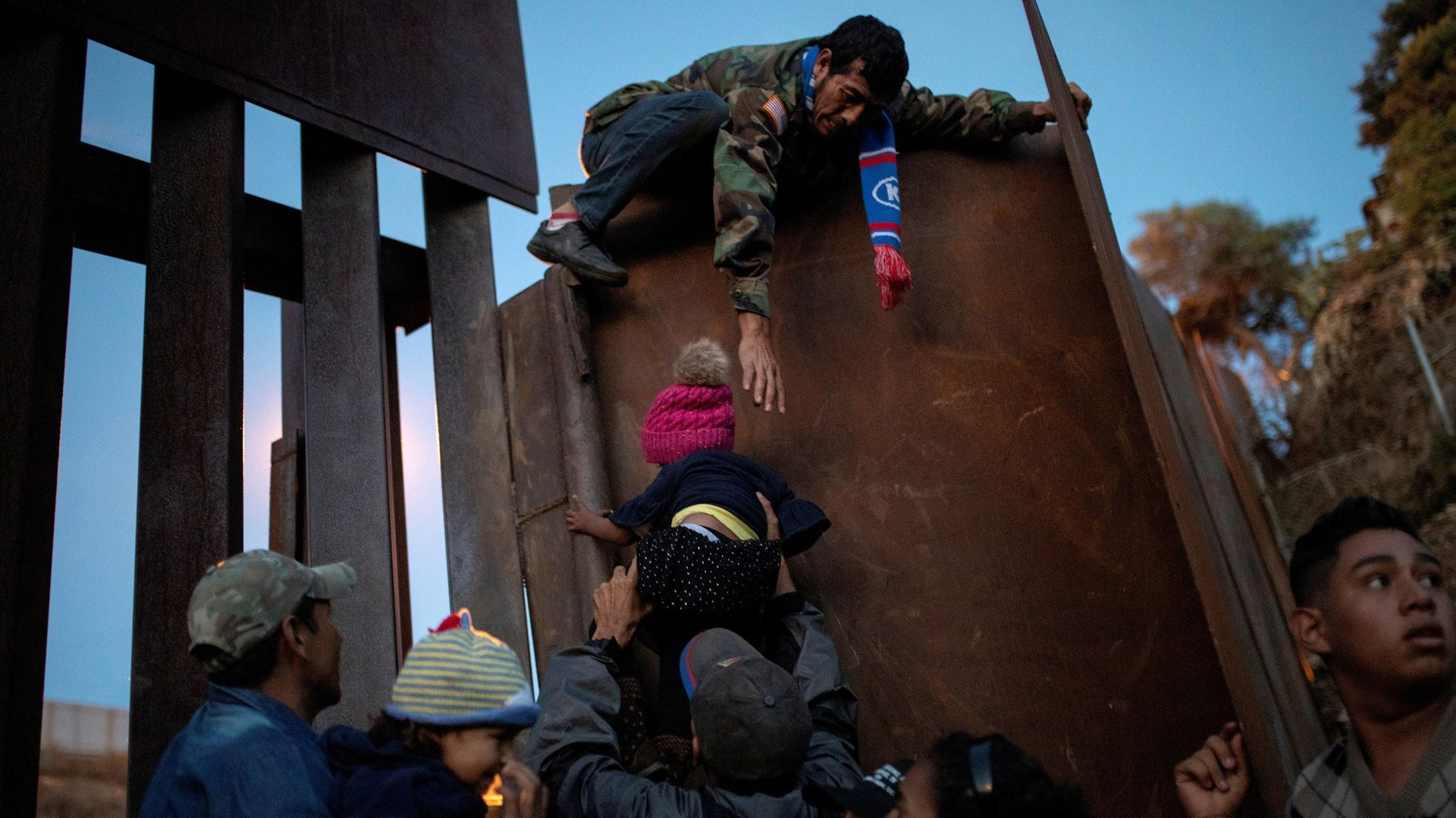Why Central Americans keep coming to the US
Some members of the caravan of Central American immigrants that arrived in Tijuana last month are starting to illegally slip through the US-Mexico border.


Some members of the caravan of Central American immigrants that arrived in Tijuana last month are starting to illegally slip through the US-Mexico border.
The Trump administration has tried a variety of strategies to stop them since they set out on the long trek weeks ago—from insults to troop deployment to the use of tear gas. But for citizens of countries that have long been convulsed by tragedy, those may seem like minor obstacles.
Here are some of the conditions and hardships that are driving Guatemalans, Hondurans, and El Salvadorans north in search of asylum.
Natural disasters
Central Americans are threatened by frequent natural disasters, according to UN University’s World Risk Report. Here’s a list of the most destructive earthquakes, hurricanes, and storms that have hit the region in the past few decades:
Armed conflict
Guatemala and El Salvador haven’t fully recovered from past conflict. Though their bloody civil wars ended in the 1990s, the same weapons are still in circulation and wreaking havoc in the region.
Recently, political instability has shaken Honduras, where a 2009 military coup replaced a democratically-elected president with a repressive regime. Civil unrest resurged after last year’s controversial reelection of president Juan Orlando Hernández.
Violence, impunity, and poverty
Political instability and natural disasters have contributed to a widening gap between poor and rich in the region. Poverty and weak institutions have led to rampant crime, which in turn is fed by corruption. The Colegio de la Frontera Norte, or COLEF, a Mexican research university that focuses on migration, points out that violence is a common reality for Central Americans, “reaching even intimate and family spaces.”
Here are some indicators COLEF compiled in a report about the plight of caravan members in Tijuana: